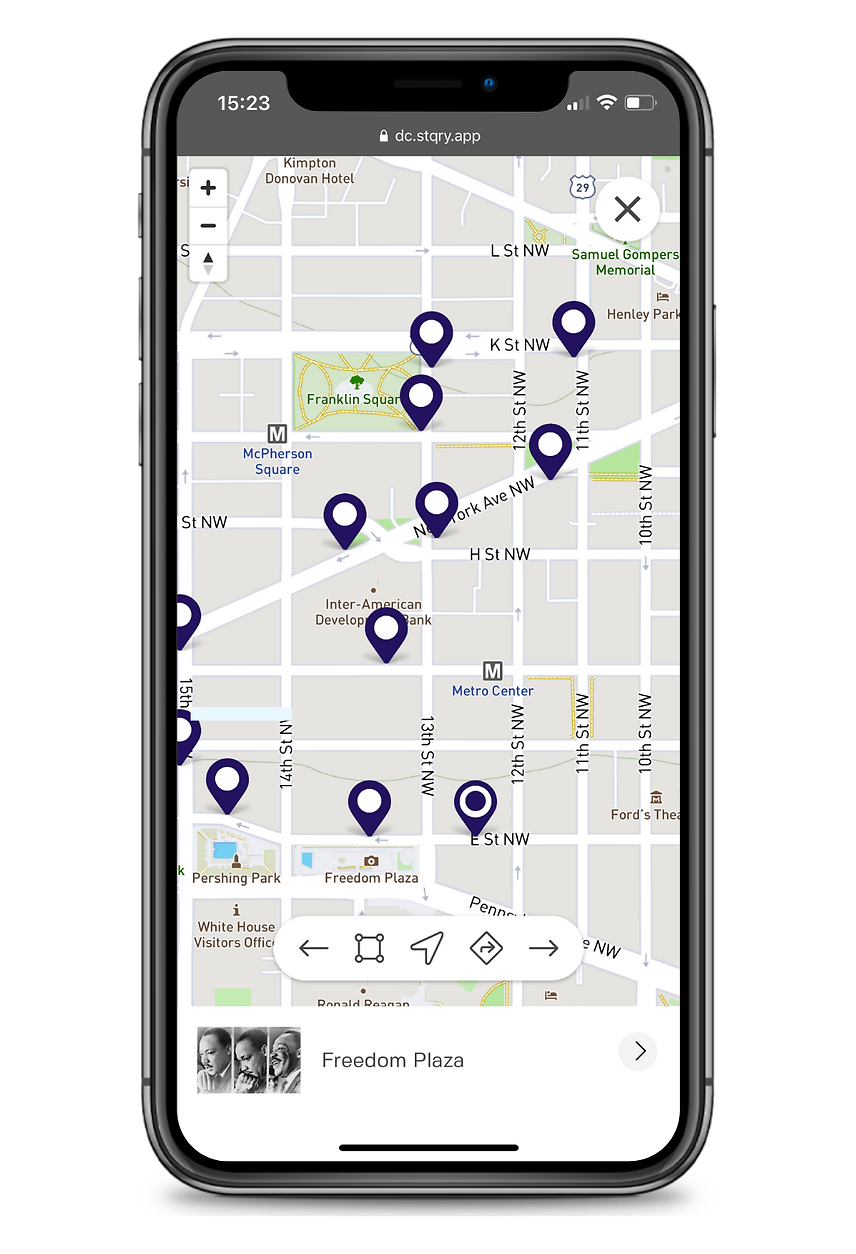%20copy.png?k=1fb3d8771e)
Tour guide apps are on the rise. With these mobile apps, visitors can listen to a guided tour from their own audio device. No need to crowd together with other visitors or rent a public device. With Covid-19 proving to be an illness the world will have to continue to cope with for some time, it’s important to provide sanitary alternatives to standard group tours and audio device rentals.
In this guide, we make a strong business case for mobile tour guide apps. Whether your company plans to offer an app for free or charge for the content, ROI is within reach.
Many tour operators from private companies to non-profits are choosing to offer self-guided tours in addition to their standard offerings.
Even if you’ll continue to offer guided tours, a mobile app is a smart optional service.
%20copy.png?k=1fb3d8771e)
Many companies and organizations choose to offer their mobile tour guide apps for free. The site experience itself might be completely free (as in walking around a district or a park). Or, the app might be included in the price of a ticket (such as with a museum or gallery).
.png?k=087bbff657)
However, the app content can be good enough to charge for all on its own. Any company can create an app, even for sites they don’t own. For example, you could make a wine guide for a popular city, and showcase the best restaurants and wineries with suggestions on what to order. Or, a non-profit park can charge for its app in order to easily pull in a high volume of low-cost donations.
When offering an app for free, you at least want the app to pay for itself, if not drive additional revenue.
One way to drive revenue is through partnerships. For example, STQRY customer Ruka Africa includes a tour of Mt. Kilimanjaro from the skies in its app.
Ruka Africa partners with a local flight company, Grumeti Air, that sponsors the app content.
You can also drive ROI from paid apps by including a page for ticket sales of other experiences, product sales, memberships, or donations. In creating such a page, your app serves as a form of content marketing. You can hope to convert a percentage of app users into customers or donors.

A mobile tour guide app can be an additional revenue stream for tour operators, or it can be a sole source of revenue for innovative digital-first companies. Many of our customers who offer digital tours charge between $3 and $20 for a tour.
The Bloody Mary Tours app, built with STQRY, takes visitors through the Bloody Mary Haunted Museum in New Orleans.
If you’re already selling in-person tours, you can calculate ROI by estimating that 50-70% of your visitors will choose this option, especially if it’s going to be more affordable than your standard guided tour. With STQRY Guide, you can launch your own app in just a few weeks and with no custom coding. Because there’s no need to hire software developers, many companies can start seeing ROI within just a few weeks after their app launch.
Whether your mobile tour guide app will be free or paid, you want it to be high-quality. It’s important for visitors to have a great experience, learn something new, and recommend your app or site to their friends.
Here’s how to create a great app:

The most important thing when creating a mobile tour guide app is to keep it simple. At STQRY, great UX is built into every app. When customizing your app, you’ll want to focus more on the content, and less on the tech. You might choose to have a welcome page or to showcase the different tours on the home screen. We recommend having only 3-5 items in the bottom menu navigation. You can add pages, tours, or lists of tours to your menu.
Next, it’s time to add your content. For a great experience, you’ll want to add images, text, and audio to your most important pages. Depending on the nature of your tour, you might have one page per site or per asset.

In this example from Cultural Tourism DC, we can see a page for each stop on the tour. The pages have an image, text, and a short audio clip.
If you plan on offering your tour to virtual visitors, you might also want to include some video content.
Keep in mind that you don’t have to treat every site or asset the same. You can prioritize more time-intensive content creation for the most important features, and for others just add a text description and a single image.
STQRY has a map feature to offer visitors a better experience. You can include a map of your tour so that visitors can choose where to go next, rather than follow your exact tour. Users can click on the map icons and play the content.

You can also use STQRY’s geo-triggers to automatically notify the user of relevant content when they pass within the geofence. Users can also set the audio content to autoplay, so that as they walk or drive along a tour route, the audio will follow their progress. This makes the experience feel like an in-person guided tour as much as possible.
A mobile tour guide app can generate new revenue in the form of tour purchases, product sales, memberships, sponsorships, and donations. When you build your app with STQRY, you reduce the cost by over 90% compared to custom coding.